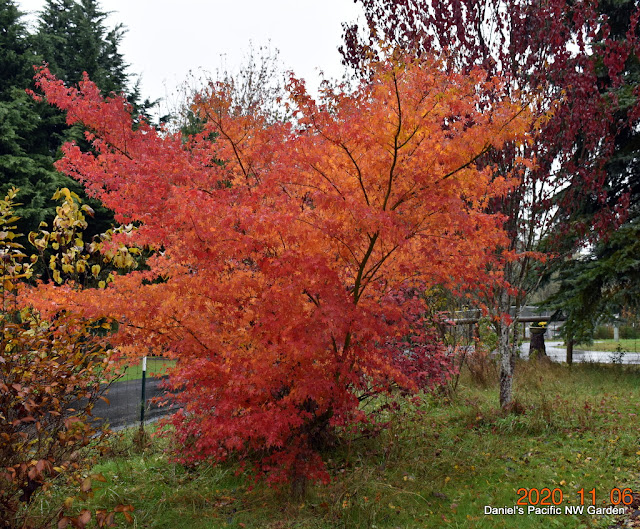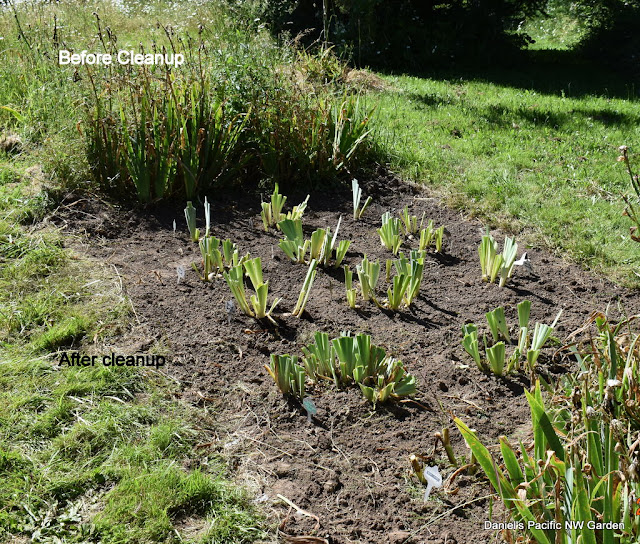These are some of my semi-random thoughts. I try not to be too contrarian, but I also think we have to think for ourselves.
I saw this was in my unpublished blog from 2014. No idea why I didn't publish then. The thoughts are still what I think.
Many websites and authors express strong preference for growing native plants. The thought is, native plants are best adapted for a particular local area, and plants that originate elsewhere, by definition lack certain properties, such as being adapted to the local provenance, soil, climate, water conditions, temperature, and insect populations.
 |
| American Chestnut. Source Vintageprintable.com |
I really love quintessential "American" plants and trees. It's a reason I like the idea of growing Pawpaws and American persimmons. And, American linden, some maple species, and some native orchids. And, if I could, mayapples, morels, chantrelles, tulip poplar, and others.
But what, in most urban suburban, and rural settings, outside of actual wildlands, exists of the original conditions? Those are the conditions that American plants are best adapted to. The temperature? Climate zones have migrated. Climate change is remodeling the climate condition everywhere. So once native plants are adapted to a former, often gone, condition. In general, local climates are warmer than before, but there is also shift in rain patterns. The soil? Much is gone. In the highly modified lands of urban, suburban, farm, former farm, and logged forest, phenomenal amounts of topsoil are gone forever. Much blew away in the dust bowl, and in farming practices. Forestry, logging, and farming, resulted in washing away a big fraction, sometimes most, of the original soil. The remaining soil is populated with trillions of earthworms - highly beneficial to the gardener and farmer, but causing a paradigm shift in the soil structure, nutrition, texture, water holding capacity, and presence of protective layers of undecomposed leaves.
Looking around populated areas here, what remains of original species of trees and plants? The vast majority seem to be gone. Instead, the yards and gardens contain plants from Europe, Asia, the Middle East, and many hybrids and human-modified plants. The grasses are foreign. Many of the trees, if not most, are foreign.
In wild places, there may still be mostly original species but again, the climate itself is different. The soil is different. Even the air is different - increased CO2 may change growth of some plants, more than others. The water is different - the more acidic pH of the water means the soil itself is more acidic. Plants that are adapted to a local soil pH, texture, nutritional constitution - those may be local, but no longer adapted to transformed environmental conditions.
 |
| Dead American Chestnut. Source: vintageprintable.com |
In addition to changes in soil, climate, some species have been erased - a "cleansing" from the local ecosystems. The vast forests of chestnut were killed off by Chestnut blight, and no longer exist. The vast forests of Elm were killed off by Dutch Elm disease - they also no longer exist. Bison, gone. Passenger pigeon, once present in the billions, gone. Ash, on the way out. If each member of a forest or prairie, is an essential part of the fabric, then that fabric is already permanently changed and cannot be regenerated. Not even if the few members of the erased species can be re-engineered, or re-hybridized, or re-generated, to be resistant to the introduced diseases and changed environment. Then there are the introduced insects and mammals, which are probably here to stay as well.
There are indications that the North American forests and prairies have long been more like gardens and farms, than wild forests. Native Americans transformed them by burning and planting, and their ancestors destroyed the megafauna to the point of extinction. Megafauna - mastedons, wooly mammoths, sloths, tapirs, bison species, pronghorn, giant beavers, horses - were part of an ecosystem, interacting with and affecting plant growth, keeping some in control, controlling others. Removal of native predators, means deer have proliferated to the point of being an invasive species, even when native - destroying palatable plants, and leaving unpalatable ones in place.
Megafauna are thought to have lead to proliferation of pawpaws and persimmons. Later, it was Native Americans who planted them. Now, it's us. Both of these species range from the Southeast to the Mississippi basin, nowhere near where I live in Pacific NW. So here, they are exotic tree species, like apples, peaches, pears, figs, most plums and most cherries.
I know, there are lists of harmful exotics. Especially, highly invasive ones. In the southeast, that's kudzu. In the Northwest, it's English Ivy, Himalayan Blackberry (actually, European), and Buddleia, Tansy ragwort, and others. Some of these are really harmful, replacing other species and crowding others out, or toxic, like giant pigweed. We don't think of it, but our lawn grasses are invasive species. The dandelion, ubiquitous, and probably harmless, even beneficial, is invasive. And probably can not be eradicated. In our yards, many more - but maybe more annoying, as opposed to harmful on a vast scale, like Hyacinthoides,
Bishopweed, in the Northwest, may fill a niche, and have a role where others don't survive. Especially Hyancinthoides, which deer leave alone.
 |
| Pawpaw. Image source: vintageprintablecom. Pawpaws don't look much like this. |
I have read that native pollenizing insects also are best adapted to the native plants, and not to exotics. That may be true. There are philosophical, as well as scientific, reasons. But insects evolve fast. That's why we have an ongoing chemical war against insects in factory farming - they evolve to resist each chemical that is sprayed against them. I suspect they will also adapt, and many probably already have, to the different flower shapes and colors, different pollen types, and other characteristics of exotics. Certainly, I have watched many pollinating insects devour nectar and pollen from nonnative alliums like Chinese chive, shallots, onions, and from buddleia, apple, non-native plum, non-native cherry flowers..
In the typical American garden, farm, suburban yard, locally derived plants can be nice, and have a clear role. But there is no reason to avoid plants from the world's vast resources of centuries of importation, adaptation, genetics, and breeding. Plants from elsewhere will often be better adapted, more useful, and more suitable to the highly changed and changing ecosystem.




















































